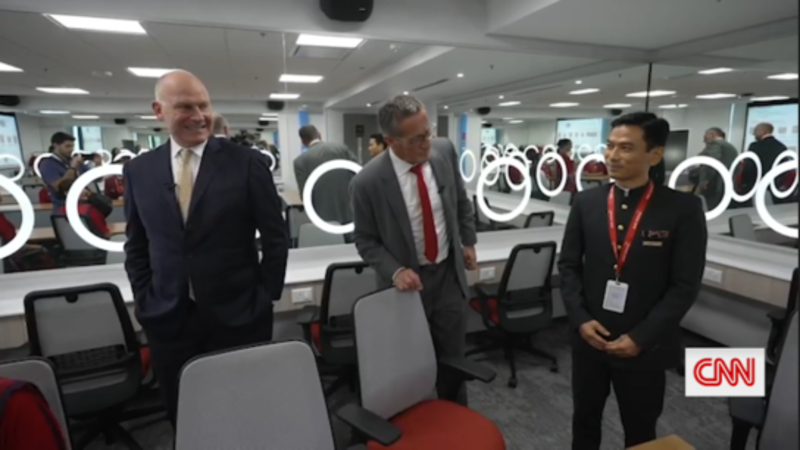In a move to showcase its commitment to excellence and innovation, Air India CEO Campbell Wilson recently offered CNN’s Richard Quest an exclusive tour of the airline’s cutting-edge training facilities. The visit, which took place at Air India’s sprawling campus in New Delhi, underscores the airline’s efforts to strengthen its operational capabilities and improve service quality.
The tour provided an inside look at the comprehensive training programs designed to equip Air India’s staff with the skills necessary to meet the demands of modern aviation. With the global airline industry facing unprecedented challenges, Air India’s investment in training is seen as a strategic effort to maintain competitiveness and ensure passenger safety.
Inside Air India’s Training Facilities
During the visit, Campbell Wilson highlighted the various aspects of the training facilities, which include state-of-the-art simulators, advanced classrooms, and mock-up cabins. These facilities are integral to the training of pilots, cabin crew, and ground staff, ensuring they are well-prepared for real-world scenarios.
“Our training facilities are among the best in the industry,” Wilson remarked. “We are committed to providing our staff with the best possible resources to enhance their skills and deliver exceptional service to our passengers.”
“Our training facilities are among the best in the industry.” — Campbell Wilson, CEO of Air India
The Role of Training in Aviation Safety
Training is a critical component of aviation safety, and Air India’s focus on this area reflects a broader industry trend. According to the International Air Transport Association (IATA), rigorous training programs are essential for maintaining high safety standards and operational efficiency.
Experts in the field emphasize the importance of continuous training, especially in light of the rapid technological advancements in the aviation sector. “As aircraft become more sophisticated, the need for comprehensive training programs becomes even more crucial,” said aviation analyst John Smith. “Airlines that invest in training are better positioned to adapt to changes and ensure safety.”
Historical Context and Future Implications
Air India’s emphasis on training is not new. The airline has a long history of prioritizing staff development, dating back to its early days. However, the recent enhancements to its training facilities mark a significant step forward, aligning with global best practices.
This development comes as the airline industry rebounds from the impacts of the COVID-19 pandemic. With air travel demand on the rise, airlines are under pressure to ramp up operations while maintaining safety and service quality. Air India’s investment in training is a proactive measure to address these challenges.
By the Numbers: The global airline industry is expected to grow by 7% annually over the next five years, according to IATA.
Looking Ahead
As Air India continues to expand its operations and enhance its service offerings, the role of its training facilities will be pivotal. The airline’s commitment to staff development not only supports its growth strategy but also reinforces its reputation as a leader in the aviation industry.
Moving forward, Air India’s training programs are expected to evolve, incorporating new technologies and methodologies to keep pace with industry advancements. The airline’s focus on training is likely to serve as a model for others, highlighting the importance of investing in human capital to achieve long-term success.
The unveiling of Air India’s training facilities to Richard Quest is more than just a showcase; it is a testament to the airline’s dedication to excellence and its vision for the future of aviation.
























